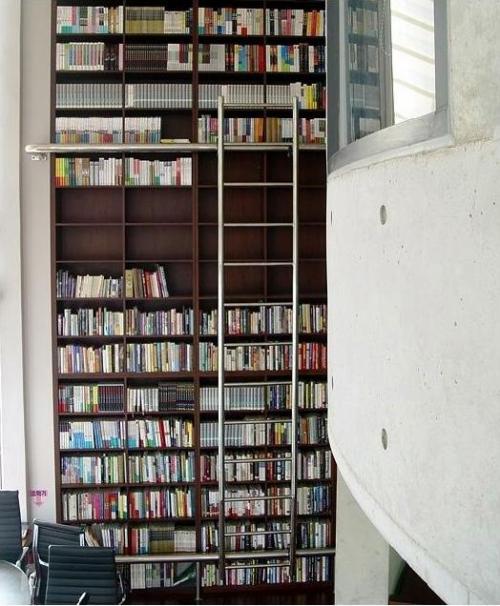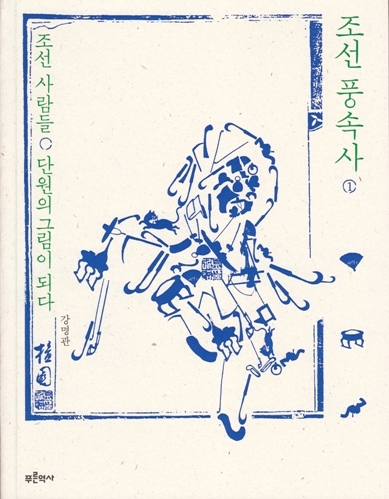
‘Readers want a bit of extravagance — art, even’
Judging a book by its cover is not a behavior worthy of a wise person ― or so the old saying goes. But for the growing number of trendsetters out there, the way a book looks is just as important as whether it’s interesting or not.
“I recently remodeled my living room, filling two entire walls with bookshelves,” Kim Jin-hyun, 33, said. “I filled the shelves, mostly with art and design related books with colorful bindings and covers. I’m pretty satisfied with the result.”
Has she read all the books?
“Well, I’m sure I’ll get to that some day.”
If not people like Ahn, who are openly treating books as interior decorating items, many others admit they’d choose a book with a well-designed jacket over a banal one any day.
As inflation and economic slowdown persist, even buying books seems like a luxury that “calls for careful thinking,” college student Lee Ji-hye, 23, said.
“I recently gave up my part-time job to start preparing for job interviews and so I have a much lighter pocket these days,” she said.
“If I’m looking at books by the same author, I naturally buy one with a prettier cover. It’s my way of maximizing the pleasure of spending.”
To fight years-long sluggish sales in a country with a sharply decreasing number of paper book readers, publishing firms here have been coming up with various strategies.
According to the Korea Publishing Marketing Research Institute, 73 percent of South Korean publishers saw their profits plunge an average of 30 percent during the last two-year period.
One strategy was to make cheaper and smaller books dubbed “handy-books.”
By abbreviating several steps in the designing and printing process and using lower-grade paper, handy-books ― moderately priced at around 6,000 won (about $6) ― hit local bookstores beginning in 2008.
The books, however, failed to make much profit, disappearing from bookstores shortly afterwards.
Price cuts are apparently not what book buyers these days are looking for, experts and those in the field say.
“Readers today are not seeing books as mere knowledge-gaining tools. They are looking for books that make them feel good by possessing them and books to keep for a long time,” Han Young-a, head of Assouline Asia, a branch for the New York-based luxury publishing firm, said.
“Why shouldn’t books be treated as fashion items like handbags and earrings?”
Along with Taschen, Assouline is famous for luxurious hardcover art and culture books widely-known among collectors that include a number of celebrities.
“Korean readers have always been more sensitive about the quality and condition of books,” said Han Soo-hyun, a sales manager at the chain bookstore Kyobo Book Center. “Korean readers have traditionally treasured books as something they should keep clean and hold onto for a long time.”
“People who buy new books instead of borrowing them or buying secondhand or electronic books are obviously looking to possess a little more than just the content of the book. They want a bit of extravagance ― art, even,” she added. “I think this is why handy-books failed.”
It takes an average of two weeks for a book designer to design a cover, according to publishing firms. The designers, most of whom work on a freelance-basis while holding separate art-related professions, are paid from 1 million to 1.5 million won per cover.
Judging a book by its cover is not a behavior worthy of a wise person ― or so the old saying goes. But for the growing number of trendsetters out there, the way a book looks is just as important as whether it’s interesting or not.
“I recently remodeled my living room, filling two entire walls with bookshelves,” Kim Jin-hyun, 33, said. “I filled the shelves, mostly with art and design related books with colorful bindings and covers. I’m pretty satisfied with the result.”
Has she read all the books?
“Well, I’m sure I’ll get to that some day.”
If not people like Ahn, who are openly treating books as interior decorating items, many others admit they’d choose a book with a well-designed jacket over a banal one any day.
As inflation and economic slowdown persist, even buying books seems like a luxury that “calls for careful thinking,” college student Lee Ji-hye, 23, said.
“I recently gave up my part-time job to start preparing for job interviews and so I have a much lighter pocket these days,” she said.
“If I’m looking at books by the same author, I naturally buy one with a prettier cover. It’s my way of maximizing the pleasure of spending.”
To fight years-long sluggish sales in a country with a sharply decreasing number of paper book readers, publishing firms here have been coming up with various strategies.
According to the Korea Publishing Marketing Research Institute, 73 percent of South Korean publishers saw their profits plunge an average of 30 percent during the last two-year period.
One strategy was to make cheaper and smaller books dubbed “handy-books.”
By abbreviating several steps in the designing and printing process and using lower-grade paper, handy-books ― moderately priced at around 6,000 won (about $6) ― hit local bookstores beginning in 2008.
The books, however, failed to make much profit, disappearing from bookstores shortly afterwards.
Price cuts are apparently not what book buyers these days are looking for, experts and those in the field say.
“Readers today are not seeing books as mere knowledge-gaining tools. They are looking for books that make them feel good by possessing them and books to keep for a long time,” Han Young-a, head of Assouline Asia, a branch for the New York-based luxury publishing firm, said.
“Why shouldn’t books be treated as fashion items like handbags and earrings?”
Along with Taschen, Assouline is famous for luxurious hardcover art and culture books widely-known among collectors that include a number of celebrities.
“Korean readers have always been more sensitive about the quality and condition of books,” said Han Soo-hyun, a sales manager at the chain bookstore Kyobo Book Center. “Korean readers have traditionally treasured books as something they should keep clean and hold onto for a long time.”
“People who buy new books instead of borrowing them or buying secondhand or electronic books are obviously looking to possess a little more than just the content of the book. They want a bit of extravagance ― art, even,” she added. “I think this is why handy-books failed.”
It takes an average of two weeks for a book designer to design a cover, according to publishing firms. The designers, most of whom work on a freelance-basis while holding separate art-related professions, are paid from 1 million to 1.5 million won per cover.

Lee Suk-woon, a freelance book designer who has designed some 1,000 covers in the past eight years, admitted looks are one of the important features of a book these days.
“Still, I must say, it’s still the content of the book that really matters,” he said.
In a move reflecting the recent trend, the state-run Korea Publication Ethics Commission conducted its first “Good Design Book” contest this year, awarding “Joseon Pungsoksa (Customs of Joseon Dynasty)” with first prize. Some 234 books competed for the top prize.
Chung Byoung-kyoo, who reviewed the submissions, said the winner managed to “talk about old pictures in a modernized, refined way.”
“We were looking for uniqueness above all qualities,” the judge said, noting that a growing number of Korean book covers were following the book cover trends in the U.S. and Japan.
By Shin Hae-in
(hayney@heraldcorp.com)







![[Graphic News] More Koreans say they plan long-distance trips this year](http://res.heraldm.com/phpwas/restmb_idxmake.php?idx=644&simg=/content/image/2024/04/17/20240417050828_0.gif&u=)
![[KH Explains] Hyundai's full hybrid edge to pay off amid slow transition to pure EVs](http://res.heraldm.com/phpwas/restmb_idxmake.php?idx=644&simg=/content/image/2024/04/18/20240418050645_0.jpg&u=20240419100350)





![[From the Scene] Monks, Buddhists hail return of remains of Buddhas](http://res.heraldm.com/phpwas/restmb_idxmake.php?idx=652&simg=/content/image/2024/04/19/20240419050617_0.jpg&u=20240419175937)

![[KH Explains] Hyundai's full hybrid edge to pay off amid slow transition to pure EVs](http://res.heraldm.com/phpwas/restmb_idxmake.php?idx=652&simg=/content/image/2024/04/18/20240418050645_0.jpg&u=20240419100350)

![[Today’s K-pop] Illit drops debut single remix](http://res.heraldm.com/phpwas/restmb_idxmake.php?idx=642&simg=/content/image/2024/04/19/20240419050612_0.jpg&u=)